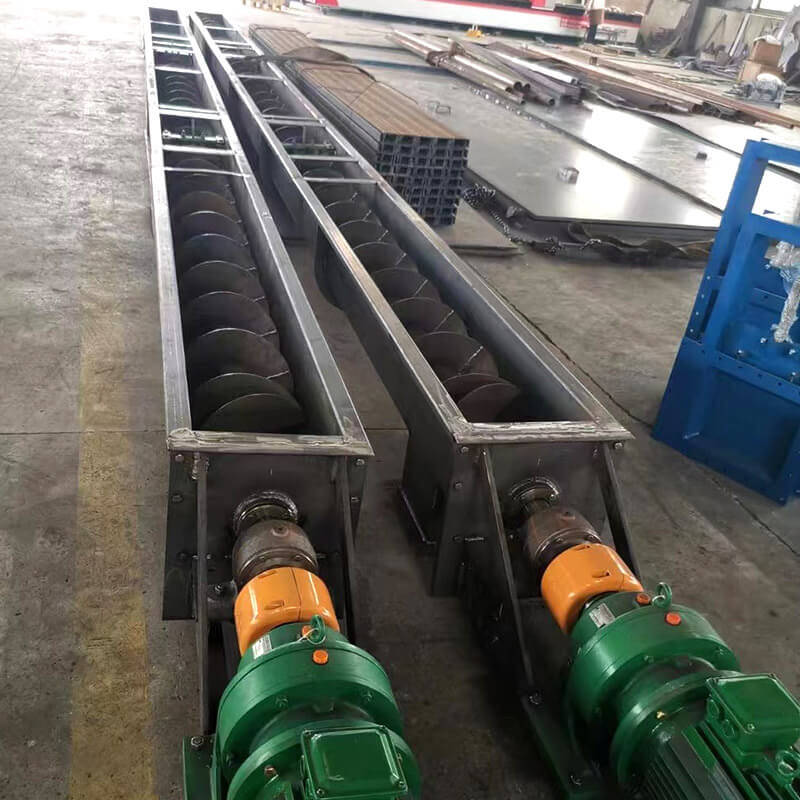Введение
Когда речь идет о перемещении сыпучих материалов, таких как зерно, цементили осадка, немногие решения могут сравниться с универсальностью винтовой конвейер (также называемый шнековый конвейер). Но как именно работает эта промышленная "рабочая лошадка"? Что отличает его от других типов конвейеров? И что Вы должны знать, прежде чем выбрать его?
✔ Что такое винтовой конвейер? - Основные компоненты и применение
✔ Как работают винтовые конвейеры - С анимированными диаграммами
✔ 6 основных типов и их идеальное применение
✔ Шнековый конвейер по сравнению с винтовым конвейером. ковшовый конвейер - Критические различия
✔ Общие проблемы и как их избежать
Как ведущий производитель винтовых конвейеровКомпания Darko Machinery помогла сотням клиентов оптимизировать работу с материалами. Читайте дальше, чтобы получить экспертную оценку - или свяжитесь с нашими инженерами для индивидуальной консультации.
1. Что такое винтовой конвейер?
Шнековый конвейер (или шнековый транспортер) - это механическая система, которая использует вращающиеся спиральные лопасти для перемещения порошка, частиц или полужидких материалов по трубам или желобам.
Ключевые компоненты:
| Часть | Функция | Варианты материалов |
|---|---|---|
| Впадина | Содержит материал во время транспортировки | Углеродистая сталь, нержавеющая сталь, полиэтилен |
| Винтовой полет | Вращающееся лезвие, которое перемещает материал | Закаленная сталь, абразивостойкие покрытия |
| Приводной блок | Обеспечивает вращательную силу | Электрические, гидравлические или пневматические двигатели |
| Подшипники | Вращение опорного винта | Самосмазывающиеся, герметичные конструкции |
| Вход/выход | Точки входа и выхода материала | Фланцевые, раздвижные ворота или нестандартные конструкции |
Где используются винтовые конвейеры?
✔ Сельское хозяйство: Обработка зерна, кормов и удобрений
✔ Пищевая промышленность: Мука, сахар, пудра
✔ Сточные воды: Обезвоживание осадка, биоотходы
✔ Строительство: Транспортировка цемента, песка, сухих строительных смесей
✔ Горное дело: Уголь, руда, транспортировка хвостов
*(Совет профессионала: Для использования в пищевой промышленности выбирайте нержавеющую сталь 304/316 с санитарной отделкой.)*
2. Как работает винтовой конвейер?
Когда спиральный вал вращается, под действием силы тяжести материала и силы трения о стенки канавки материал может двигаться вперед по дну канавки конвейера только под действием лопастей, как если бы гайка, которая не может вращаться, двигалась в поступательном направлении по вращающемуся винту. Основной движущей силой материала является сила, направленная вверх и вперед, которую оказывают спиральные лопасти при вращении в осевом направлении вдоль тангенциального направления лопастей.
Чтобы поддерживать вал шнека в благоприятном напряженном состоянии, приводное устройство и разгрузочное отверстие обычно располагаются на одном конце конвейера, а загрузочное отверстие - как можно ближе к хвостовой части другого конца. Вращающиеся спиральные лопасти толкают материал для транспортировки, а силой, препятствующей вращению материала вместе с лопастями спирального конвейера, является вес самого материала и сопротивление трения корпуса спирального конвейера о материал.
Форма поверхности лопастей зависит от типа транспортируемого материала, включая твердую поверхность, поверхность ленты и поверхность лопастей. Вал шнека винтового конвейера имеет упорный подшипник на конце направления движения материала, чтобы обеспечить осевую силу реакции на шнек вместе с материалом. Если машина длинная, необходимо добавить промежуточную подвесную опору.
3. Сравнение типов винтовых конвейеров
| Тип | Лучшее для | Преимущества | Ограничения |
|---|---|---|---|
| Горизонтальный | Передача материала на короткие расстояния | Низкая стоимость, простота обслуживания | Максимальный наклон 15° |
| Наклонный (≤45°) | Подъемные материалы | Компактный дизайн | Мощность падает ~30% при 45° |
| Вертикальный | Применения с высоким подъемом | Компактная площадь | Более высокие требования к мощности |
| Без вала | Липкие/осадочные материалы | Отсутствие центрального вала = отсутствие засорения | Не для абразивных материалов |
| Гибкий | Многонаправленная маршрутизация | Портативный, простая установка | Меньшая емкость |
| Трубчатый | Пыльные/резкие материалы | Полностью закрытая конструкция | Труднее чистить |

4. Винтовой конвейер против ковшового элеватора: Основные различия
| Характеристика | Винтовой конвейер | Ковшовый элеватор |
|---|---|---|
| Типы материалов | Порошки, гранулы, осадок | В основном сухие гранулы |
| Возможность наклона | До 45° (стандарт) | Вертикально (90°) |
| Диапазон вместимости | 1-300 м³/ч | 5-500 м³/ч |
| Техническое обслуживание | Низкая (мало движущихся частей) | Умеренный (износ ремней/ковшей) |
Когда выбирать шнековый конвейер?
Работа с липкие или хрупкие материалы
Нужно Переменные точки разгрузки
Требуется локализация пыли/одоров
5. Общие проблемы и решения для винтовых конвейеров
Проблема 1: Скопление/засорение материала
Причины:
Липкие материалы (например, влажный осадок)
Неправильная конструкция шага винта
Перегрузка кормушки
Решения:
→ Использование Конструкция безвального винта
→ Установить точки доступа для очистки
→ Добавить Вибраторы или воздушные ножи
Проблема 2: Чрезмерный износ
Причины:
Абразивные материалы (песок, руда)
Высокая скорость вращения
Плохое выравнивание материала
Решения:
→ Применять Износостойкие накладки (керамика, сталь AR)
→ Уменьшить рабочая скорость by 20%
→ Использование Закаленные кромки полета
Проблема 3: Неисправности уплотнений
Причины:
Инфильтрация пыли
Перекос подшипника
Тепловое расширение
Решения:
→ Обновление до Лабиринтные уплотнения
→ Установить датчики контроля состояния
→ Использование самоустанавливающиеся подшипники
Будучи профессиональным производителем винтовых конвейеров, мы предлагаем индивидуальные проектные решения. Если у Вас есть вопросы или требования к конвейерам, пожалуйста связаться с нами-Наши инженеры подберут оптимальное решение для Ваших нужд.

